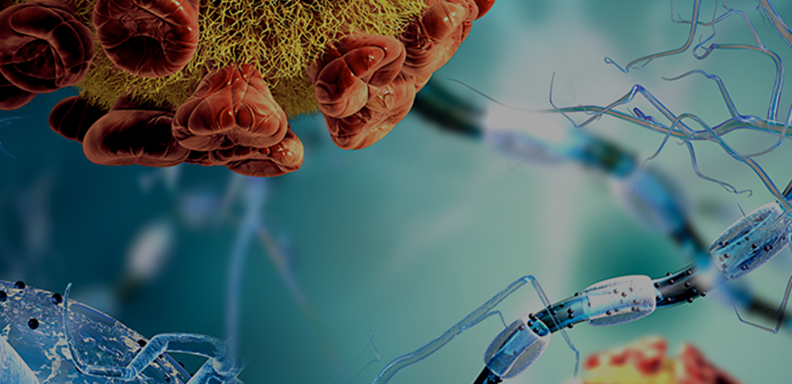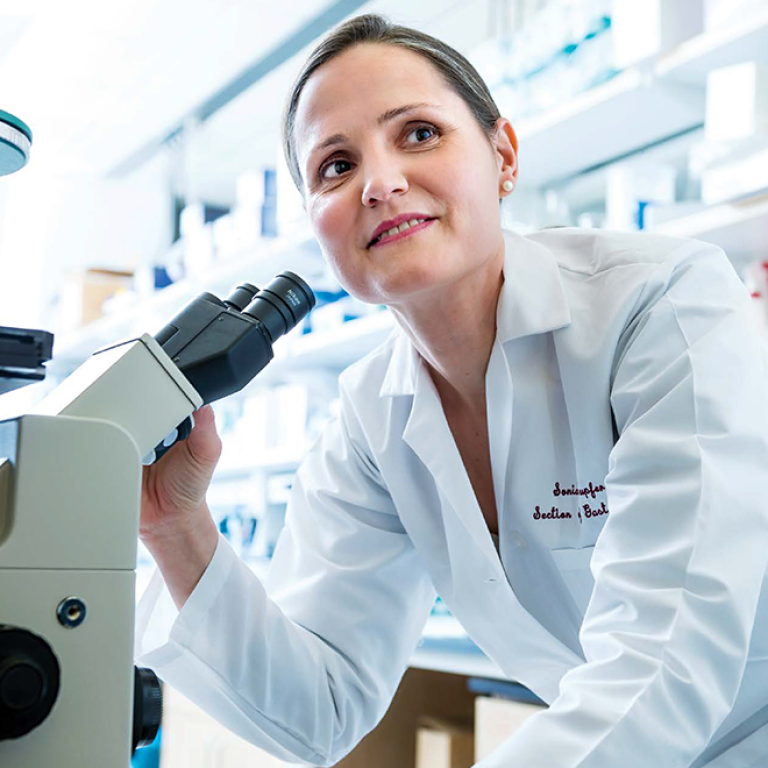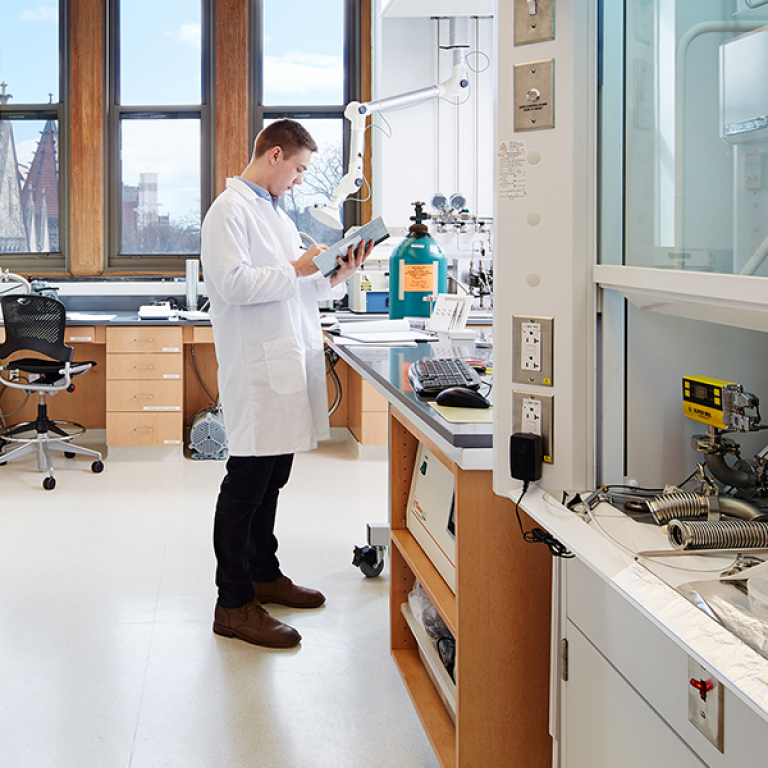Plastic is everywhere. It coats our wires, cushions our shoes, packages our groceries, and shapes our most essential tools. Since the mid-20th century, plastics have revolutionized modern life, delivering affordable, durable, and lightweight materials on an unprecedented scale. But behind this convenience lies an escalating problem. Most plastics are derived from fossil fuels, designed for single use, and persist for centuries. Today, plastic waste clogs landfill, pollutes oceans, and infiltrates our food chains as microplastics.
The world’s linear plastics economy is one that takes, makes, and discards, reaching its tipping point. As a chemist, I must ask: Can we redesign plastics on a molecular level to function within a circular economy? Can they be made from renewable materials, with lifespans that support reuse, repair, and recyclability?
At the University of Chicago, I’m exploring those questions through my postdoctoral research in the lab of Stuart Rowan, Barry L. MacLean Professor for Molecular Engineering. Our work focuses on transforming the fundamental chemistry of plastics by incorporating cellulose nanocrystals (CNCs) into new materials. CNCs are rod-like particles derived from plants, bacteria, algae, and tunicate cellulose, one of the most abundant natural polymers on Earth. They are lightweight, non-toxic, and renewable. More importantly, they offer the mechanical strength and surface chemistry needed to design high-performance materials that are also sustainable.
From plants to polymers
My path into this field has always been guided by a desire to solve real-world problems using chemistry as a tool for environmental justice. I earned my Ph.D. in Chemistry from Clark Atlanta University, a historically Black university, where I first began working with bio-based, biocompatible, and biodegradable polymers.
Those early projects taught me the powerful skills of using natural materials to tune the properties of new materials. Working with collaborators at the USDA Forest Products Laboratory, I helped investigate how bio-fillers affect thermal, mechanical, and structural properties. The results were promising; adding CNCs improved strength, stability, and functionality. I saw firsthand how molecular modifications could lead to major improvements in how we process and manage materials.
That experience fueled my current work at the Rowan Lab, where we take the concept further by combining chemically modified CNCs with dynamic covalent networks (DCNs), a class of polymers that can reversibly break and reform chemical bonds under specific conditions like heat or light. Unlike traditional polymers like thermosets, which harden irreversibly and are nearly impossible to recycle, DCNs offer self-healing, reprocessing, and recyclability, all while maintaining and improving the high performance required for conventional use.
By incorporating chemically modified CNCs into these materials, we aim to create fully sustainable, reprocessable plastics that are tougher, lighter, and smarter to help fuel the circular economy.
Chemistry that serves communities
The environmental impact of plastics is not just a scientific issue; it’s a social one. Marginalized communities often bear the brunt of environmental degradation, from toxic waste sites to plastic pollution in waterways. As a scientist trained at historically Black institutions and deeply committed to mentorship, I believe inclusivity must be woven into the way we practice and communicate science.
During my time as a graduate student, I mentored over 60 undergraduates in general chemistry courses and helped train students from diverse backgrounds in research labs, contributing to their first scientific publications. I’ve seen how access to research can change lives and how diverse perspectives lead to more innovative, thoughtful science.
That philosophy guided my involvement in the PELICANS program (Plastics in the Environment: Leaders and Innovators Collaborating from Australia, New Zealand, and the United States). As part of this international initiative, I joined a cohort of scientists, in Sydney and Melbourne, committed to addressing the global plastics crisis. We developed leadership strategies focused on systemic change, community engagement, and scalable solutions. These cross-cultural conversations reaffirmed what I’ve always known: no one country or discipline will solve the plastics problem alone. Interdisciplinary collaboration is key.
The road ahead
Despite the promise of sustainable plastics, challenges remain. Many bio-based fillers like CNCs must be optimized for compatibility with polymers. Processing methods need to evolve to accommodate these materials without compromising performance. And we need stronger policy frameworks to support the transition from petroleum-based plastics to renewables.
The potential is enormous. By engineering materials at the molecular level, we can design plastics that last only as long as we need them; no more, no less. We can create materials that self-repair, disassemble on command, and re-enter production loops without waste. We can build a future where sustainability is not a constraint, but a catalyst for creativity.
My long-term goal is to lead a research group focused on green chemistry, circular materials, and inclusive education. I envision a lab where polymer design, environmental science, and strong mentorship are homogenous. I want to train students who not only excel in chemistry, but who understand its role in environmental justice.
As we rethink what polymers can be, I’m proud to be part of the movement building smarter, cleaner, and more responsible materials for the world ahead.



